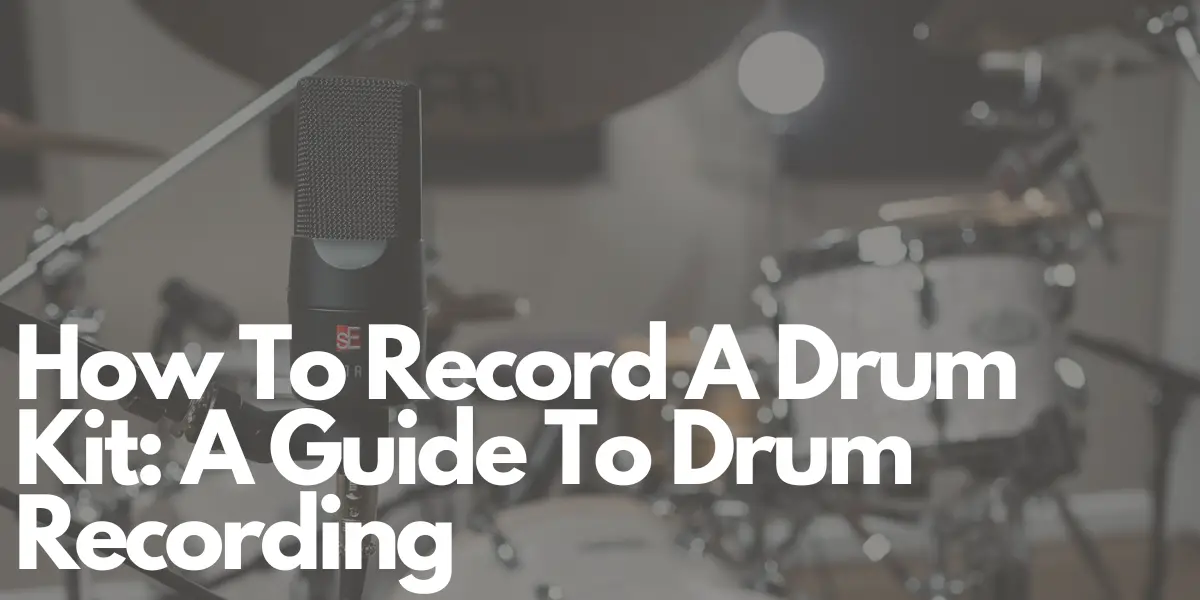Recording a drum kit can be a challenging yet rewarding task. To capture the full depth and nuances of the drum kit, you need careful planning, the right equipment, and attention to detail. In this comprehensive guide, we will take you through each step of the drum recording process, from preparing the drum kit to mastering the final recording.
Prepare the Drum Kit
Before hitting the record button, it’s crucial to ensure that your drum kit is in excellent condition. Start by changing drumheads if they are worn out, tuning the drums to your desired pitch, and making sure that all hardware is securely fastened. A well-maintained drum kit will produce a cleaner and more consistent sound during recording.
Choose a Suitable Room
Selecting the right room or space for recording can significantly impact the quality of your drum sound. Consider the sound you want to achieve when choosing a location. Large rooms tend to provide more natural reverb and space, while smaller rooms can yield a tighter and more controlled sound. Experiment with different spaces to find the one that suits your project best.
Set Up the Microphones
Your choice of microphones and their placement is crucial in capturing the essence of your drum kit. There are three primary miking approaches to consider:
Close Miking
Place microphones close to each drum and cymbal to capture their individual sounds. This approach allows for more control over each element of the drum kit.
Overhead Miking
Position overhead microphones, either in stereo pairs or mono, above the drum kit to capture the overall sound, including cymbals. Overhead miking adds depth and dimension to the recording.
Room Miking
Use room microphones strategically to capture the ambiance and reverb of the recording space. Room miking can give your drums a sense of space and depth.
Choose the Right Microphones
Select microphones that are suitable for each drum or cymbal in your kit. It’s essential to choose microphones that can handle high sound pressure levels. Here are some microphone recommendations:
- Kick Drum: A dynamic or condenser microphone works well to capture the kick drum’s low-end punch.
- Snare Drum: The Shure SM57 is a popular choice for snare drum recording.
- Tom-Toms: Dynamic microphones like the Sennheiser MD 421 or Audix D4 are excellent options for toms.
- Overhead Microphones: Condenser microphones provide detailed sound for capturing cymbals and the overall kit.
- Room Microphones: Condenser microphones are often used to capture room ambiance and reverb.
Set Up the Microphones
Proper placement of your microphones is crucial to achieving the desired sound. Experiment with microphone positioning and angles to find the sweet spot for each element of the drum kit. Check for phase issues and make adjustments as needed to ensure a well-balanced sound.
Test and Adjust
Before you start recording, have the drummer play the kit while you listen through headphones or studio monitors. This step allows you to make real-time adjustments to microphone positions, angles, and levels. Pay close attention to the balance of each drum and cymbal in the mix.
Monitor and Isolate
Use headphones or studio monitors to monitor the recording as it happens. Ensure that the drummer can hear the mix clearly to maintain good timing and performance. Isolating the sound allows for a more controlled recording environment.
Record Multiple Takes
To provide flexibility during the mixing stage, it’s a good practice to record multiple takes of the drum performance. This gives you options to choose the best performance and make any necessary corrections.
Edit and Process
After recording, edit the tracks to remove unwanted noise and tighten up the performance. Process the recorded tracks using equalization, compression, and other effects to enhance the drum sound and make it sit well in the mix.
Mix the Drum Tracks
During the mixing process, balance the drum tracks with other instruments in the mix. Adjust the levels of individual drums and apply additional processing to achieve the desired drum sound that fits seamlessly with the rest of your project.
Mastering and Finalization
The final step is mastering, where you polish, balance, and prepare the overall recording for distribution. Mastering ensures that your drum tracks sound cohesive and professional within the context of the entire song.
Practice and Experiment
Remember, recording drums is a skill that improves with practice and experimentation. Don’t hesitate to try different microphone placements, processing techniques, and room settings to achieve your desired sound. With the right equipment, knowledge, and practice, you can capture the dynamic and powerful sound of the drum kit in your music productions.
In conclusion, recording drums may be complex, but by following these steps and continuously honing your skills, you can achieve outstanding results and elevate your music productions to the next level.
Author: Mike P
Hi! My name is Mike! I’ve been an apartment producer/musician for 10+ years. I’ve played in punk bands, released EDM tunes on Beatport and iTunes, and have a semi-successful stock music portfolio. Read more…



